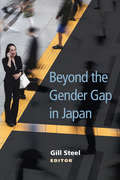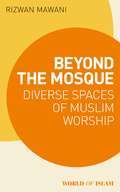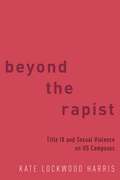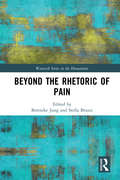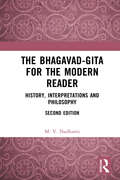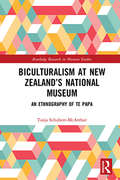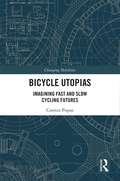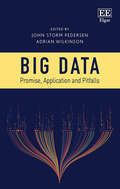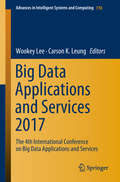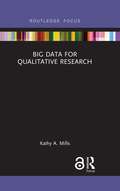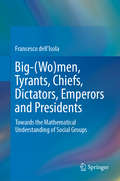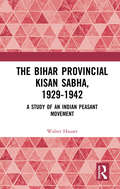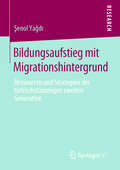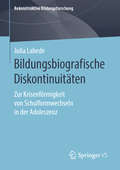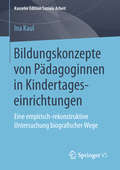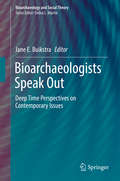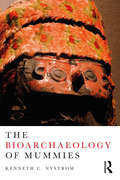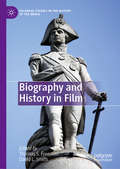- Table View
- List View
Beyond the Gender Gap in Japan (Michigan Monograph Series in Japanese Studies #85)
by Gill SteelWhy do Japanese women enjoy a high sense of well-being in a context of high inequality? Beyond the Gender Gap in Japan brings together researchers from across the social sciences to investigate this question. The authors analyze women’s values and the lived experiences at home, in the family, at work, in their leisure time, as volunteers, and in politics and policy-making. Their research shows that the state and firms have blurred “the public” and “the private” in postwar Japan, constraining individuals’ lives, and reveals the uneven pace of change in women’s representation in politics. Yet, despite these constraints, the increasing diversification in how people live and how they manage their lives demonstrates that some people are crafting a variety of individual solutions to structural problems. Covering a significant breadth of material, the book presents comprehensive findings that use a variety of research methods—public opinion surveys, in-depth interviews, a life history, and participant observation—and, in doing so, look beyond Japan’s perennially low rankings in gender equality indices to demonstrate the diversity underneath, questioning some of the stereotypical assumptions about women in Japan.
Beyond the Mosque: Diverse Spaces of Muslim Worship (World of Islam)
by Rizwan Mawani'To my knowledge, there is no similar general introduction to the different spaces of worship used by Muslims. The well-travelled author shares his first-hand experiences with readers, showing how cultural and geographical factors have shaped the surprisingly diverse Muslim communities around the world. Written in an easy-to-follow style, this short book is important in correcting the simplistic division of Muslims as either 'Sunni' or 'Shi'i' and revealing the variety of interpretations of Islam that coexist today.'Dr Farhad Daftary, Director of the Institute of Ismaili Studies
BEYOND THE RAPIST C: Title IX and Sexual Violence on US Campuses
by Kate Lockwood HarrisIn the United States, approximately one in five women experiences rape during college, and LGBTQ students experience sexual violence at even higher rates. An increasing number of interested parties, from activists and students to legislators and university administrators, are re-evaluating the role that universities and colleges play in the incidence of sexual violence on their campuses. To this end, the number of U.S. universities under investigation for mishandling sexual assaults has recently grown to the highest count to date. Many more universities, guided by federal laws such as Title IX and the Clery Act, are working to better prevent and address various forms of assault on their campuses by implementing new policies, reporting procedures, and investigative processes. Now that such measures have been implemented for several years, however, the question arises of whether these institutional changes are actually combatting the issue of campus sexual assault or whether they might in practice be reproducing that violence in other forms. In Beyond the Rapist, Kate Lockwood Harris considers this question and how the relationships among organization, communication, and violence inform how we understand the ways in which universities talk about and respond to sexual violence. Drawing upon theoretical insights from feminist new materialism, Harris explores how complex physical and symbolic components of violence are embedded in organizations and applies this thinking to the policies and practices of a university known for its Title IX processes. In doing so, she suggests that combatting the epidemic of sexual violence on college campus involves both recognizing that sexual violence is part of larger systems of injustice and refining our definition of violence to encompass far more than individual moments of physical injury.
Beyond the Rhetoric of Pain (Warwick Series in the Humanities)
by Stella Bruzzi Nike JungBeyond the Rhetoric of Pain presents a fresh, interdisciplinary approach to the current research on pain from a variety of scholarly angles within Literature, Film and Media, Game Studies, Art History, Hispanic Studies, Memory Studies, Anthropology, Sociology, Philosophy, and Law. Through the combination of these perspectives, this volume goes beyond the existing structures within and across these disciplines framing new concepts of pain in attitude, practice, language, and ethics of response to pain. Comprised of fourteen unique essays, Beyond the Rhetoric of Pain maintains a common thread of analysis using a historical and cultural lens to explore the rhetoric of pain. Considering various methodologies, this volume questions the ethical, social and political demands pain makes upon those who feel, watch or speak it. Arranged to move from historical cases and relevance of pain in history towards the contemporary movement, topics include pain as a social figure, rhetorical tool, artistic metaphor, and political representation in jurisprudence.
Beyond the Rhetoric of Pain (Warwick Series in the Humanities)
by Berenike Jung Stella BruzziBeyond the Rhetoric of Pain presents a fresh, interdisciplinary approach to the current research on pain from a variety of scholarly angles within Literature, Film and Media, Game Studies, Art History, Hispanic Studies, Memory Studies, Anthropology, Sociology, Philosophy, and Law. Through the combination of these perspectives, this volume goes beyond the existing structures within and across these disciplines framing new concepts of pain in attitude, practice, language, and ethics of response to pain. Comprised of fourteen unique essays, Beyond the Rhetoric of Pain maintains a common thread of analysis using a historical and cultural lens to explore the rhetoric of pain. Considering various methodologies, this volume questions the ethical, social and political demands pain makes upon those who feel, watch or speak it. Arranged to move from historical cases and relevance of pain in history towards the contemporary movement, topics include pain as a social figure, rhetorical tool, artistic metaphor, and political representation in jurisprudence.
The Bhagavad-Gita for the Modern Reader: History, Interpretations and Philosophy
by M. V. NadkarniWhat is the Bhagavad-Gita? Is it just a religious text? When was it composed? How relevant is it to the modern world? This book answers these foundational questions and more. It critically examines the Bhagavad-Gita in terms of its liberal, humanist and inclusive appeal, bringing out its significance for both present times and novel applications. The author elaborates the philosophy underlying the text as well as its ethical and spiritual implications. He also responds to criticisms that have been levelled against the text by Ambedkar, D. D. Kosambi and, more recently, Amartya Sen. With additional material including chapter summaries of the Bhagavad-Gita, the second edition of the volume proposes new ways of utilising the text in diverse fields, such as business and management and scientific research. Eclectic and accessible, this work will be of interest to scholars of philosophy, religion, history, business and management studies, as well as the general reader.
The Bhagavad-Gita for the Modern Reader: History, Interpretations and Philosophy
by M. V. NadkarniWhat is the Bhagavad-Gita? Is it just a religious text? When was it composed? How relevant is it to the modern world? This book answers these foundational questions and more. It critically examines the Bhagavad-Gita in terms of its liberal, humanist and inclusive appeal, bringing out its significance for both present times and novel applications. The author elaborates the philosophy underlying the text as well as its ethical and spiritual implications. He also responds to criticisms that have been levelled against the text by Ambedkar, D. D. Kosambi and, more recently, Amartya Sen. With additional material including chapter summaries of the Bhagavad-Gita, the second edition of the volume proposes new ways of utilising the text in diverse fields, such as business and management and scientific research. Eclectic and accessible, this work will be of interest to scholars of philosophy, religion, history, business and management studies, as well as the general reader.
Biculturalism at New Zealand’s National Museum: An Ethnography of Te Papa (Routledge Research in Museum Studies)
by Tanja Schubert-McArthurThe Museum of New Zealand Te Papa Tongarewa has been celebrated as an international leader for its bicultural concept and partnership with Māori in all aspects of the museum, but how does this relationship with the indigenous partner work in practice? Biculturalism at New Zealand’s National Museum reveals the challenges, benefits and politics of implementing a bicultural framework in everyday museum practice. Providing an analysis of the voices of museum employees, the book reflects their multifaceted understandings of biculturalism and collaboration. Based on a year of intensive fieldwork behind the scenes at New Zealand’s national museum and drawing on 68 interviews and participant observations with 18 different teams across the organisation, this book examines the interactions and cultural clashes between Māori and non-Māori museum professionals in their day-to-day work. Documenting and analysing contemporary museum practices, this account explores how biculturalism is enacted, negotiated, practised and envisioned on different stages within the complex social institution that is the museum. Lessons learnt from Te Papa will be valuable for other museums, NGOs, the public service and organisations facing similar issues around the world. Biculturalism at New Zealand’s National Museum addresses a gap in the literature on biculturalism and reaffirms the importance of ethnography to the anthropological enterprise and museum studies research. As such, it will be essential reading for academics, researchers and postgraduate students in the fields of cultural anthropology, museum anthropology, museum studies, and Māori studies or indigenous studies. It should also be of great interest to museum professionals.
Biculturalism at New Zealand’s National Museum: An Ethnography of Te Papa (Routledge Research in Museum Studies)
by Tanja Schubert-McArthurThe Museum of New Zealand Te Papa Tongarewa has been celebrated as an international leader for its bicultural concept and partnership with Māori in all aspects of the museum, but how does this relationship with the indigenous partner work in practice? Biculturalism at New Zealand’s National Museum reveals the challenges, benefits and politics of implementing a bicultural framework in everyday museum practice. Providing an analysis of the voices of museum employees, the book reflects their multifaceted understandings of biculturalism and collaboration. Based on a year of intensive fieldwork behind the scenes at New Zealand’s national museum and drawing on 68 interviews and participant observations with 18 different teams across the organisation, this book examines the interactions and cultural clashes between Māori and non-Māori museum professionals in their day-to-day work. Documenting and analysing contemporary museum practices, this account explores how biculturalism is enacted, negotiated, practised and envisioned on different stages within the complex social institution that is the museum. Lessons learnt from Te Papa will be valuable for other museums, NGOs, the public service and organisations facing similar issues around the world. Biculturalism at New Zealand’s National Museum addresses a gap in the literature on biculturalism and reaffirms the importance of ethnography to the anthropological enterprise and museum studies research. As such, it will be essential reading for academics, researchers and postgraduate students in the fields of cultural anthropology, museum anthropology, museum studies, and Māori studies or indigenous studies. It should also be of great interest to museum professionals.
Bicycle Utopias: Imagining Fast and Slow Cycling Futures (Changing Mobilities)
by Cosmin PopanBicycle Utopias investigates the future of urban mobilities and post-car societies, arguing that the bicycle can become the nexus around which most human movement will revolve. Drawing on literature on post-car futures (Urry 2007; Dennis and Urry 2009), transition theory (Geels et al. 2012) and utopian studies (Levitas 2010, 2013), this book imagines a slow bicycle system as a necessary means to achieving more sustainable mobility futures. The imagination of a slow bicycle system is done in three ways: Scenario building to anticipate how cycling mobilities will look in the year 2050. A critique of the system of automobility and of fast cycling futures. An investigation of the cycling senses and sociabilities to describe the type of societies that such a slow bicycle system will enable. Bicycle Utopias will appeal to students and scholars in fields such as sociology, mobilities studies, human geography and urban and transport studies. This work may also be of interest to advocates, activists and professionals in the domains of cycling and sustainable mobilities.
Bicycle Utopias: Imagining Fast and Slow Cycling Futures (Changing Mobilities)
by Cosmin PopanBicycle Utopias investigates the future of urban mobilities and post-car societies, arguing that the bicycle can become the nexus around which most human movement will revolve. Drawing on literature on post-car futures (Urry 2007; Dennis and Urry 2009), transition theory (Geels et al. 2012) and utopian studies (Levitas 2010, 2013), this book imagines a slow bicycle system as a necessary means to achieving more sustainable mobility futures. The imagination of a slow bicycle system is done in three ways: Scenario building to anticipate how cycling mobilities will look in the year 2050. A critique of the system of automobility and of fast cycling futures. An investigation of the cycling senses and sociabilities to describe the type of societies that such a slow bicycle system will enable. Bicycle Utopias will appeal to students and scholars in fields such as sociology, mobilities studies, human geography and urban and transport studies. This work may also be of interest to advocates, activists and professionals in the domains of cycling and sustainable mobilities.
Big Data: Promise, Application and Pitfalls
by Adrian Wilkinson John S. PedersenSince the early 2000s, digital data has transformed the way we live and work. This timely book looks to big data analytics to understand this revolutionary change, unpacking the impact of big data analytics on the mobilization and allocation of individuals, organizations and societies’ resources. Contributions from leading experts on modern technological trends examine the promises, applications and pitfalls of big data. The contributors assess the ways in which contemporary trajectories of data processing have increased efficiency and had a transformative effect on all avenues of life, from energy, tourism and social media, to human resources, welfare systems and urban citizenship. At a time when our personal data is more valuable than ever, this book seeks to make sense of how big data analytics has transformed our lives and how it will continue to shape society in the future. Astute and comprehensive, this book is critical reading for business and management scholars with a focus on information systems and communications technologies. It will also prove to be vital information for students and researchers of big data and digital society, as well as politics and administration more widely.
Big Data Applications and Services 2017: The 4th International Conference on Big Data Applications and Services (Advances in Intelligent Systems and Computing #770)
by Wookey Lee Carson K. LeungThis proceedings volume contains selected papers from the Fourth International Conference on Big Data Applications and Services (BigDAS 2017), held in Tashkent, Uzbekistan on August 15-18, 2017. Big data has become a core technology providing innovative solutions in many fields including social media, healthcare and manufacturing. The Fourth International Conference on Big Data Applications and Services (BigDAS 2017) presented innovative results, encouraged academic and industrial interaction, and promoted collaborative research in the field of big data worldwide. The conference was organized by the Korea Big Data Services Society and National University of Uzbekistan.
Big Data for Qualitative Research
by Kathy A. MillsBig Data for Qualitative Research covers everything small data researchers need to know about big data, from the potentials of big data analytics to its methodological and ethical challenges. The data that we generate in everyday life is now digitally mediated, stored, and analyzed by web sites, companies, institutions, and governments. Big data is large volume, rapidly generated, digitally encoded information that is often related to other networked data, and can provide valuable evidence for study of phenomena. This book explores the potentials of qualitative methods and analysis for big data, including text mining, sentiment analysis, information and data visualization, netnography, follow-the-thing methods, mobile research methods, multimodal analysis, and rhythmanalysis. It debates new concerns about ethics, privacy, and dataveillance for big data qualitative researchers. This book is essential reading for those who do qualitative and mixed methods research, and are curious, excited, or even skeptical about big data and what it means for future research. Now is the time for researchers to understand, debate, and envisage the new possibilities and challenges of the rapidly developing and dynamic field of big data from the vantage point of the qualitative researcher.
Big Data for Qualitative Research
by Kathy A. MillsBig Data for Qualitative Research covers everything small data researchers need to know about big data, from the potentials of big data analytics to its methodological and ethical challenges. The data that we generate in everyday life is now digitally mediated, stored, and analyzed by web sites, companies, institutions, and governments. Big data is large volume, rapidly generated, digitally encoded information that is often related to other networked data, and can provide valuable evidence for study of phenomena. This book explores the potentials of qualitative methods and analysis for big data, including text mining, sentiment analysis, information and data visualization, netnography, follow-the-thing methods, mobile research methods, multimodal analysis, and rhythmanalysis. It debates new concerns about ethics, privacy, and dataveillance for big data qualitative researchers. This book is essential reading for those who do qualitative and mixed methods research, and are curious, excited, or even skeptical about big data and what it means for future research. Now is the time for researchers to understand, debate, and envisage the new possibilities and challenges of the rapidly developing and dynamic field of big data from the vantage point of the qualitative researcher.
Big-(Wo)men, Tyrants, Chiefs, Dictators, Emperors and Presidents: Towards the Mathematical Understanding of Social Groups
by Francesco dell'IsolaThis book highlights mathematical ideas to help explain a number of important aspects of the dynamics of social groups. These ideas are similar to those used to describe the behaviour of Lagrangian mechanical systems, and as such this book appeals to anyone wanting to gain an understanding of the intrinsic unity of natural phenomena.
The Bihar Provincial Kisan Sabha, 1929-1942: A Study of an Indian Peasant Movement
by Walter HauserOn December 5th, 1920, in Patna, the Dasnami sannyasi Sahajanand Saraswati encountered Mahatma Gandhi for the first time. Sahajanand was already known in social-reform circles in Bihar as an energetic activist and educator working to promote Bhumihar Brahman identity. Inspired by the Mahatma’s radical reformulation of Indian nationalism, ‘the Swami’ (as Sahajanand would soon come to be known) threw himself into nationalist politics and the Indian National Congress. Within a decade, moved by the plight of tenant-farmers struggling against excessive rent demands and abusive landlord ‘exactions’, the Swami had spearheaded the formation of the Bihar Provincial Kisan Sabha. This organization quickly became the largest organization of its kind in India, catapulting the Swami onto the national stage. By the early mid-1930s the Swami had publicly broken with both the Mahatma and the ‘Gandhians’ and had made common cause with the left wing of the Congress. Later, as the storm clouds of World War II gathered on the horizon, he joined forces with the Forward Bloc and the Communist Party of India. By the time of his death in 1950, the Swami, disillusioned with politics, had dissociated himself from all parties.This pioneering 1961 study by Walter Hauser, tracks the history of the Bihar peasant movement as it both influenced and was buffeted by national and international politics. Hauser offers here a penetrating analysis of the character of the movement and the mind of its leader as he grappled with and gravitated toward Marxism-Leninism in the 1930s and 1940s. Initially written as a Ph.D. dissertation at the University of Chicago, Hauser’s path-breaking Bihar Provincial Kisan Sabha, 1929-1942 is now being published in its entirety for the first time. The volume includes a ‘Foreword’ by one of Hauser’s many students, William R. Pinch. Please note: Taylor & Francis does not sell or distribute the Hardback in India, Pakistan, Nepal, Bhutan, Bangladesh and Sri Lanka
The Bihar Provincial Kisan Sabha, 1929-1942: A Study of an Indian Peasant Movement
by Walter HauserOn December 5th, 1920, in Patna, the Dasnami sannyasi Sahajanand Saraswati encountered Mahatma Gandhi for the first time. Sahajanand was already known in social-reform circles in Bihar as an energetic activist and educator working to promote Bhumihar Brahman identity. Inspired by the Mahatma’s radical reformulation of Indian nationalism, ‘the Swami’ (as Sahajanand would soon come to be known) threw himself into nationalist politics and the Indian National Congress. Within a decade, moved by the plight of tenant-farmers struggling against excessive rent demands and abusive landlord ‘exactions’, the Swami had spearheaded the formation of the Bihar Provincial Kisan Sabha. This organization quickly became the largest organization of its kind in India, catapulting the Swami onto the national stage. By the early mid-1930s the Swami had publicly broken with both the Mahatma and the ‘Gandhians’ and had made common cause with the left wing of the Congress. Later, as the storm clouds of World War II gathered on the horizon, he joined forces with the Forward Bloc and the Communist Party of India. By the time of his death in 1950, the Swami, disillusioned with politics, had dissociated himself from all parties.This pioneering 1961 study by Walter Hauser, tracks the history of the Bihar peasant movement as it both influenced and was buffeted by national and international politics. Hauser offers here a penetrating analysis of the character of the movement and the mind of its leader as he grappled with and gravitated toward Marxism-Leninism in the 1930s and 1940s. Initially written as a Ph.D. dissertation at the University of Chicago, Hauser’s path-breaking Bihar Provincial Kisan Sabha, 1929-1942 is now being published in its entirety for the first time. The volume includes a ‘Foreword’ by one of Hauser’s many students, William R. Pinch. Please note: Taylor & Francis does not sell or distribute the Hardback in India, Pakistan, Nepal, Bhutan, Bangladesh and Sri Lanka
Bildungsaufstieg mit Migrationshintergrund: Ressourcen und Strategien der türkischstämmigen zweiten Generation
by Şenol YaĝdıŞenol Yaĝdı analysiert den Bildungsaufstieg von türkischstämmigen Studierenden der zweiten Generation in Österreich anhand leitfadengestützter Interviews. Aus einer bildungssoziologischen Perspektive werden die unterschiedlichen Einflussfaktoren, Ressourcen, Herausforderungen und Probleme der Zielgruppe auf ihrem Bildungsweg erforscht, um die Gelingensbedingungen für den Bildungsaufstieg und ihre damit verbundenen Handlungsstrategien zu ergründen. Der Autor verweist auf die Relevanz eines migrationsspezifischen kulturellen Kapitals als Möglichkeit der Habitustransformation im Rahmen einer intergenerationellen Transmission von Bildungsaufträgen.
Bildungsbiografische Diskontinuitäten: Zur Krisenförmigkeit von Schulformwechseln in der Adoleszenz (Rekonstruktive Bildungsforschung #26)
by Julia LabedeWie Schulformwechsel in der Familie verhandelt werden und wie diese Verhandlung eine Dynamik befördert, die nach einem „Ab-“ oder „Umstieg“ im Bildungssystem einen „‚Aufstieg“ ermöglicht, untersucht diese Studie fallrekonstruktiv. Anhand zweier Fallstudien werden familiale Idealisierungen und Krisengeschichten sowie ein verstärkter Selbstbezug in der Adoleszenz als Beitrag für die Genese von Wehrhaftigkeit gegenüber problematischen schulischen Adressierungen herausgearbeitet. Die Krisenhaftigkeit eines Schulformwechsels wird dabei auf eine narzisstische Kränkung zurückgeführt und im Spannungsfeld von Ideal- und Realselbst verortet.
Bildungskonzepte von Pädagoginnen in Kindertageseinrichtungen
by Ina KaulIna Kaul untersucht die Entstehung und Entwicklung von Bildungskonzepten von Pädagoginnen im Handlungsfeld der Kindertageseinrichtung. Sie zeigt, wie sich eine Vorstellung von dem, was die Pädagoginnen unter Bildung verstehen, über biografische Erfahrungen und im Kontext der Frage nach dem gesellschaftlichen Auftrag herausbildet, welche Bezugspunkte die Pädagoginnen als Referenzrahmen heranziehen und wie sie sich in diesem Kontext positionieren und Bildung in der frühen Kindheit thematisieren. Damit greift die Autorin im Kontext des Professionalisierungsprozesses die Frage nach der Verschränkung von Biografie und Wissen auf und plädiert unter anderem für die Bedeutung von Reflexivität.
Bioarchaeologists Speak Out: Deep Time Perspectives on Contemporary Issues (Bioarchaeology and Social Theory)
by Jane E. BuikstraBioarchaeologists who study human remains in ancient, historic and contemporary settings are securely anchored within anthropology as anthropologists, yet they have not taken on the pundits the way other subdisciplines within anthropology have. Popular science authors frequently and selectively use bioarchaeological data on demography, disease, violence, migration and diet to buttress their poorly formed arguments about general trends in human behavior and health, beginning with our earliest ancestors. While bioarchaeologists are experts on these subjects, bioarchaeology and bioarchaeological approaches have largely remained invisible to the public eye. Current issues such as climate change, droughts, warfare, violence, famine, and the effects of disease are media mainstays and are subjects familiar to bioarchaeologists, many of whom have empirical data and informed viewpoints, both for topical exploration and also for predictions based on human behavior in deep time. The contributions in this volume will explore the how and where the data has been misused, present new ways of using evidence in the service of making new discoveries, and demonstrate ways that our long term interdisciplinarity lends itself to transdisciplinary wisdom. We also consider possible reasons for bioarchaeological invisibility and offer advice concerning the absolute necessity of bioarchaeologists speaking out through social media.
The Bioarchaeology of Mummies
by Kenneth C. NystromThe modern manifestation of mummy studies began to take shape in the 1970s and has experienced significant growth during the last several decades, largely due to biomedical interest in soft tissue pathology. Although this points to a vibrant field, there are indications that we need to take stock of where it is today and how it may develop in the future, and this volume responds to those demands. In many ways, mummy studies and skeletal bioarchaeology are "sister-disciplines," sharing data sources, methodologies, and practitioners. Given these close connections, this book considers whether paradigmatic shifts that influenced the development of the latter also impacted the former. Whilst there are many available books discussing mummy research, most recent field-wide reviews adopt a biomedical perspective to explore a particular mummy or collection of mummies. The Bioarchaeology of Mummies is a unique attempt at a synthetic, state-of-the-field critical analysis which considers the field from an explicitly anthropological perspective. This book is written for both skeletal bioarcheologists that may not be familiar with the scope of mummy research, and mummy researchers from biomedical fields that may not be as acquainted with current research trends within bioarchaeology.
The Bioarchaeology of Mummies
by Kenneth C. NystromThe modern manifestation of mummy studies began to take shape in the 1970s and has experienced significant growth during the last several decades, largely due to biomedical interest in soft tissue pathology. Although this points to a vibrant field, there are indications that we need to take stock of where it is today and how it may develop in the future, and this volume responds to those demands. In many ways, mummy studies and skeletal bioarchaeology are "sister-disciplines," sharing data sources, methodologies, and practitioners. Given these close connections, this book considers whether paradigmatic shifts that influenced the development of the latter also impacted the former. Whilst there are many available books discussing mummy research, most recent field-wide reviews adopt a biomedical perspective to explore a particular mummy or collection of mummies. The Bioarchaeology of Mummies is a unique attempt at a synthetic, state-of-the-field critical analysis which considers the field from an explicitly anthropological perspective. This book is written for both skeletal bioarcheologists that may not be familiar with the scope of mummy research, and mummy researchers from biomedical fields that may not be as acquainted with current research trends within bioarchaeology.
Biography and History in Film (Palgrave Studies in the History of the Media)
by Thomas S. Freeman David L. SmithThe essays in this volume seek to analyze biographical films as representations of historical individuals and the times in which they lived. To do this, contributors examine the context in which certain biographical films were made, including the state of knowledge about their subjects at that moment, and what these films reveal about the values and purposes of those who created them. This is an original approach to biographical (as opposed to historical) films and one that has so far played little part in the growing literature on historical films. The films discussed here date from the 1920s to the 2010s, and deal with males and females in periods ranging from the Middle Ages to the end of the twentieth century. In the process, the book discusses how biographical films reflect changing attitudes towards issues such as race, gender and sexuality, and examines the influence of these films on popular perceptions of the past. The introduction analyses the nature of biographical films as a genre: it compares and contrasts the nature of biography on film with written biographies, and considers their relationship with the discipline of history. As the first collection of essays on this popular but understudied genre, this book will be of interest to historians as well as those in film and cultural studies.
